UNESCO World Heritage Sites in IndiaA site or place that is recognized by the United Nations Educational, Scientific and Cultural Organization (UNESCO) as a site of physical or cultural importance is known as a UNESCO World Heritage Site. UNESCO is a specialized agency of the United Nations (UN) that aims to promote peace and security in the world by performing important roles in different fields, such as education, science, culture, etc. Accordingly, it is involved in the identification and preservation of natural and cultural heritage sites found anywhere in the world. It believes that a place of physical or cultural importance should be protected and preserved for the public and future generations to learn and appreciate the past. As of 2020, there are a total of 38 UNESCO world heritage sites in India, out of which 30 are cultural sites, 7 are natural sites and the remaining one is a mixed site. List of cultural world heritage sites in India
Natural World Heritage Sites in India
Mixed World Heritage Site in IndiaList of cultural world heritage sites in India1) Taj Mahal, AgraIt is located at the bank of river Yamuna in the city of Agra, Uttar Pradesh, and is one of the Seven Wonders of the World. It was built by Mughal emperor Shah Jahan as a magnificent mausoleum in the memory of his wife Mumtaj Mahal who died in 1631. In 1983, this site became a UNESCO world heritage site. Shah Jahan named it Taj Mahal to honour his wife Mumtaj Mahal. 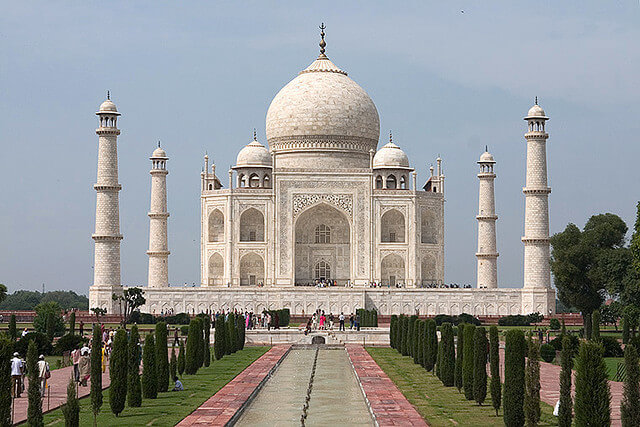
This monument is a splendid example of Mughal architecture that is a combination of Indian, Persian and Islamic architecture. Due to the beauty of its architecture, it is also known as the "Jewel of Muslim Art in India". It is made of pure white marble decorated with semi-precious stones. The construction of this monument started in 1632 AD and completed in 1648 AD. So, it took around 16 years to complete this exquisite marble structure. Although thousands of artisan were involved in its construction, the Ustad-Ahmad Lahori was the main architect of the Taj Mahal. 2) Agra Fort, AgraIt is located in the city of Agra, India, at a distance of 2.5 km from the Taj Mahal. It is one of the most important Mughal monuments commissioned by Mughal ruler Akbar in 1565 AD. It was the main residence of the Mughal rulers until 1683 before their capital was shifted from Agra to Delhi. In 1983, it was given the status of UNESCO World Heritage Site. 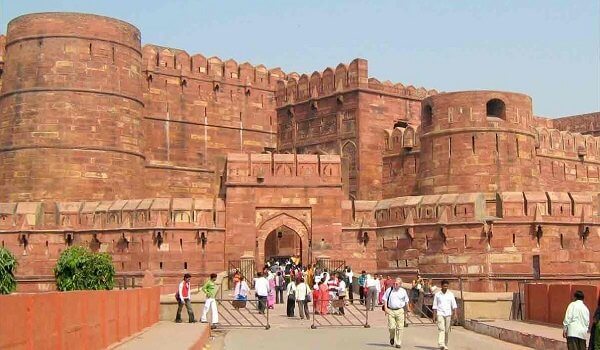
It is also famous as Red Fort of Agra. Before becoming Agra Fort, it was a brick monument namely Badalgarh as it was owned by a Hindu Rajput King Raja Badal Singh. Sikander Lodi was the first Sultan of Delhi who lived at this fort after the invasion. The fort houses a number of monuments like Khas Mahal, Muhamman Burie, Diwan-e-Khas, Diwan-e-Am, Sheesh Mahal, Moti Masjid, Jahangir Palace and Musamman Burj where Shah Jahan died in 1666AD, and more. It is a crescent-shaped fort that faces the river Yamuna on the east. Initially, this fort had four gates, two of which later closed or walled up. The gate through which visitors enter is called the Amar Singh gate. 3) Ajanta Caves, MaharashtraAjanta Caves are located 107 km from Aurangabad, Maharashtra. This site is a group or cluster of 32 rock-cut Buddhist caves with decorated sculptures and paintings related to the life of Buddha. It dates back to the 2nd century BC to the 7th century (650) CE. Since 1983, it is one of the UNESCO World Heritage Sites in India. This site was discovered by a British Army Officer during British rule in India in 1819. 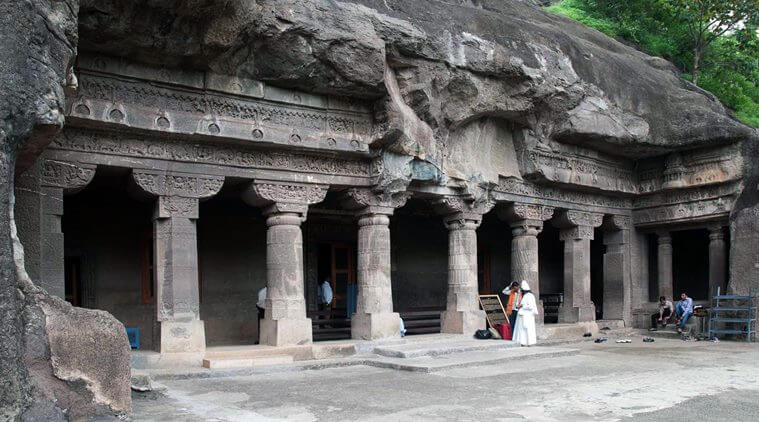
Although these 30 caves are present at one place, they were built in two phases in two different time periods. First, it was built during the Satvahana Dynasty (230 BCE - 220 CE). Then few more structures were added to it or built during the Vakataka period under the reign of the ruler of the Vakataka Dynasty. It is a perfect place to see the Buddhist culture and their lifestyle through paintings and sculptures. The basic architecture of the caves is known as 'Chaityagrihas' and 'Viharas'. The painting, sculptures and other structures were built by Buddhist monks by using simple tools such as a chisel, hammer, etc. The main highlights of this place include sculptures of Buddha and acts or scenes from the traditional Jataka tales. It is a living example of ancient Indian art and is one of the best cave monuments in India. 4) Ellora Caves, MaharashtraIt is one of the famous archaeological sites in India, located at a distance of 29 kilometres to the Northwest of Aurangabad, Maharashtra. In 1983, it was recognized as a UNESCO World Heritage Site. 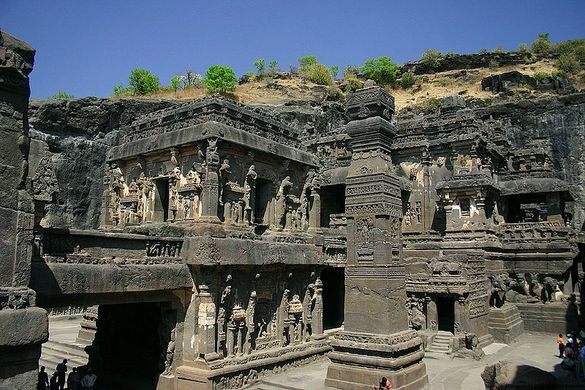
This ancient site comprises 34 rock-cut temples and caves stretched over 2 kilometres, and carved from the cliff rock from 600 to 1000 AD. These caves and temples are an excellent example of Indian-rock cut architecture. This site provides an insight into the lives of people of those times. The presence of Jain, Buddhist and Hindu temples at this site shows the tolerance and friendliness among different faiths and beliefs in ancient India. Apart from rock-cut temples, you can also see Charanandri Hills, Viharas and Maths built between the 5th and the 10th century. The main highlight of this site is the 8th century Kailasa temple which stands at a height of 32 meters and is the largest single rock-cut structure in the world. Although there are a total of 100 caves at this site, only 34 caves are opened to the public. Out of which 5 are Jain caves, 12 are Buddhist caves and 17 are Hindu caves. It is believed that the Hindu and Buddhist caves were constructed by the Rashtrakuta Dynasty and Jain caves by Yadav dynasty. 5) Sun Temple, KonarkKonark Sun Temple is dedicated to the Hindu god Surya (the Sun). It is located around 35 km to the northeast of Puri in the Odisha state of India. In 1984, it was recognized as a World Heritage site by UNESCO. Its name Konark is made of two Sanskrit words; kona which means corner or angle and arka which means the sun. 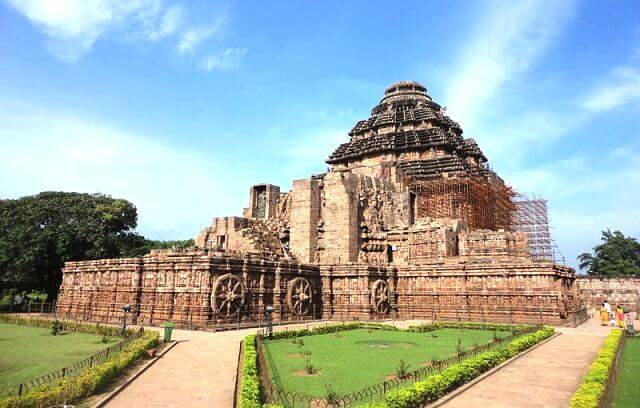
It was built in the middle of 13th century by King Narasimhadeva I of the Eastern Ganga dynasty (8th century to 15th century). It is constructed in the form of a chariot that has 24 or 12 pairs of carved stone wheels and led by seven horses. The 12 pairs represent the 12 months in a year. Besides this, it has three images of deities on its three different sides dedicated to the sun god Surya in such a way that these images receives the sun rays one by one in the morning, noon and evening respectively. Furthermore, it is converted into a stage during the Konark Dance festival that is held every year for the devotees of the sun god. 6) Mahabodhi Temple Complex, BodhgayaIt is located at Bodh Gya at a distance of 96 km from Patna, Bihar, and is one of the most sacred Buddhist pilgrimage sites in the world. In 2002, it was recognized as a World Heritage Site by UNESCO. It is a very sacred place for the Buddhists as it is home to the holy Bodhi Tree, which is a peepal tree under which the Lord Buddha used to mediate and attained enlightenment while meditating. 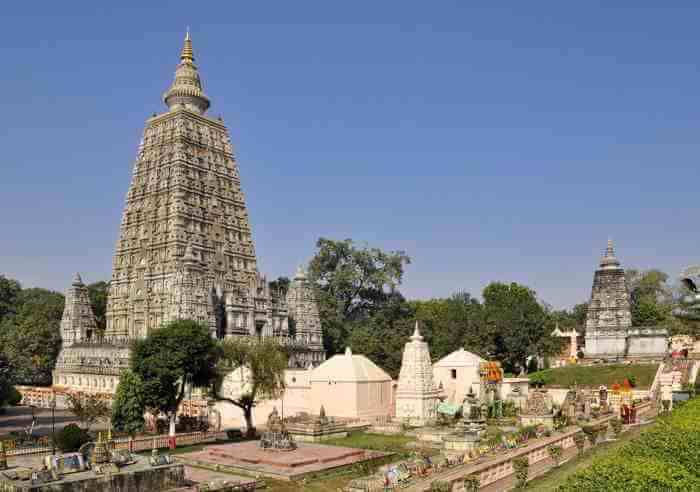
Adjacent to the Bodhi tree, there is Mahabodhi Temple that is around 50 m tall and was built by the Great Ashoka in 250 BC. The temple complex is also known as Bodhimanda which means "Posture of Awakening." As per a belief of Jataka legends, the Bodhi tree is standing at the point where the Earth's navel lies. There are lots of towers in the temple complex. The other attraction of the site is a gold-painted idol of Lord Buddha sitting in the 'Bhumisparsa Mudra'or an earth touching posture. The Mahabodhi Temple complex offers a deep insight into the life and teachings of Lord Budha. It is an important Buddhist site like Sarnath, Lumbini, and Kushinagar. 7) Group of Monuments at MahabalipuramIt is located at the Coromandel Coast of Bay of Bengal, around 60 km far from Chennai. It is called the group of monuments as it is a collection of religious temples that include the main complex of Mahabalipuram and 40 sanctuaries including an open-air rock relief. These group of monuments were constructed in the Pallava Period (7th to 8th century). 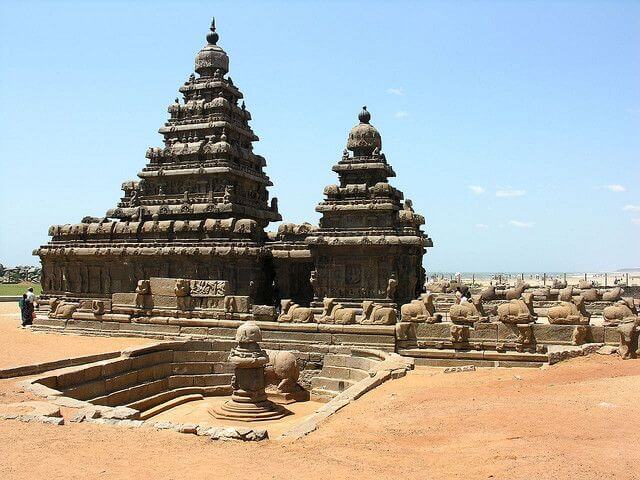
This site was restored by Archaeological Survey of India after 1960. In 1984, it was accorded the status of a World Heritage site by UNESCO. The site can be divided into four sections that include Rathas, Mandapas (Cave Temples), Rock Reliefs and Structural Temples. Most of the monuments date back to the 7th century. Rathas are chariot-shaped temples. The five Ratha temples are named after the pandavas the five brothers of Mahabharata and one is named after Draupadi. They were built by Narsimha, the Pallava king in the 7th and 8th centuries. Shor Temple is another highlight of this site. It is made of granite and is carved from a single piece of stone. It was built in the time of Narsimhavarman. It is a five-story (floor) temple that comprises 3 shrines out of which two are dedicated to Lord Shiva and one is dedicated to Lord Vishnu. Furthermore, it has a huge open-air rock relief. 8) Red Fort Complex, New DelhiIt is located on the western bank of the Yamuna River in the capital city of Delhi, India. It was constructed by the Mughal ruler Shah Jahan in 1648. The complex is surrounded by a wall that measures 2.4 km in length or circumference. Its elevation varies from 18 meters to 33 meters. 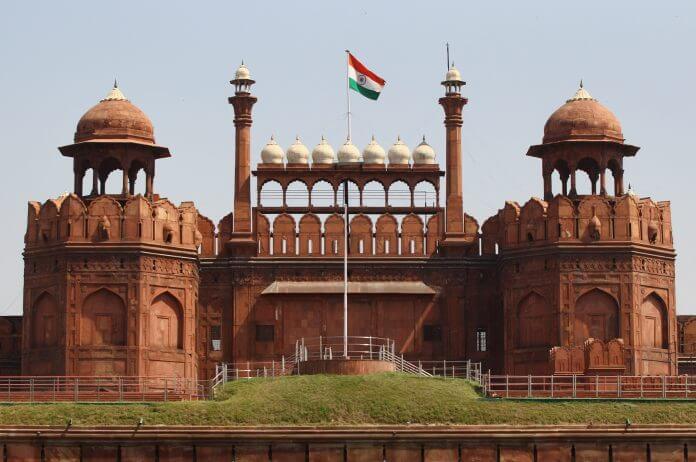
It is an outstanding example of the brilliance of Mughal Era architecture. India celebrated its independence first at this place by hoisting the national flag of India on 15th August 1947 by the first prime minister of India, Jawahar Lal Nehru. Red Fort was the main residence of the rulers of Mughal dynasty. Earlier, it was known as the Quila-e-Mubarak (the Blessed Fort). It got its present name from its walls that are made of red sandstone. This monument houses many museums that display various precious artefacts. It also houses various heritage components of the Mughal Era and various smaller buildings such as the Diwan-i-aam, and the Diwan-i-khas. In 2007, it was accorded the status of UNESCO World Heritage Site. The monument is spread over 254.67 acres and is built in the form of an octagon. Every year, when the Independence Day is celebrated, the prime minister of India unfurls the national flag at Red Fort. 9) The Jantar Mantar, JaipurIt is located in the Jaipur city of Rajasthan. It is an astronomical observatory that houses 19 astronomical instruments including the world's largest stone sundial (vrihat samrat yantra). It was built in the 18th century (1728 CE and 1734 CE) by the Rajput King Sawai Jai Singh II of Rajasthan and became a UNESCO World Heritage Site in 2010. 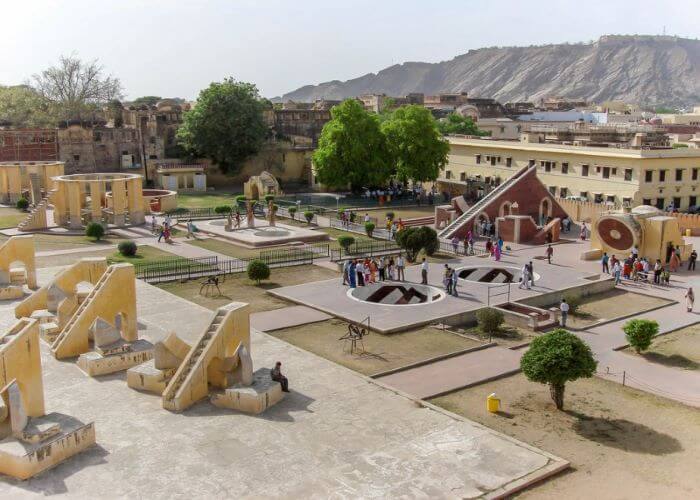
These astronomical instruments are actually stone structures representing geometric shapes. Some of the famous instruments are Samrat Yantra, Chakra Yantra, Jai Prakash Yantra, Rama Yantra , Utaansh Yantra, and Dingash Yantra. These instruments were developed to calculate celestial coordinate systems, the equatorial system, the ecliptic system, the horizon-zenith local system, etc. It allowed observing astronomical positions of celestial bodies. Besides this, they were also used for measuring time, predicting eclipses, tracking the location of stars, and determining celestial altitudes, etc. The stone instruments at Jaipur's Jantar Mantar are believed to be more accurate than other such instruments. 10) Churches and Convents of GoaThis site is located in the Old Goa, India and comprises churches and convents of Old Goa that were built between 16th and 18th centuries by the Portuguese colonial rulers. In 1986, UNESCO declared it a World Heritage Site. 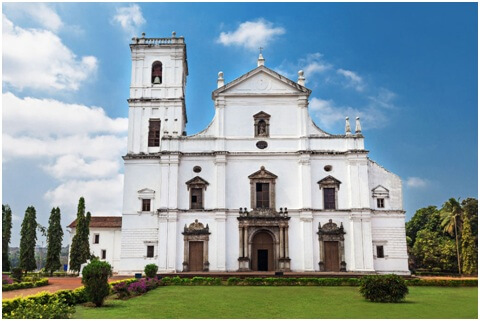
The main highlight of this site is Bom Jesus that contains the tomb of St. Francis Xavier who died in 1552. It was constructed in the 16th century and is the first Minor Basilica in India that represents baroque architecture in India. The other famous churches of this place are Se' Cathedral, Church and Convent of St. Francis of Assisi, Chapel of St. Catherine, Church of Rosary, etc. Se' Cathedral, which is devoted to St. Catherine of Alexandria, is the largest church in Asia. 11) Fatehpur Sikri, AgraFatehpur Sikri is located at a distance of around 30 km from the Agra, Uttar Pradesh. It is known as the city of victory as it was built after the victory of Akbar over Chittor and Ranthambore. The city is mainly made of red sandstone and was the capital of Mughals for around fourteen years (1571 to 1584). The site is surrounded by an 11 km long defence wall with many entrances. 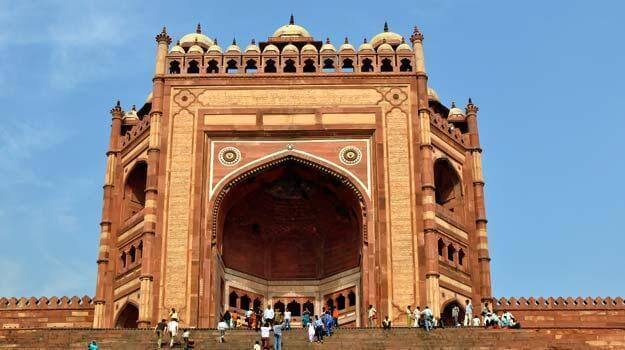
It is also said that it was built by Akbar to honour the Sufi saint Salim Chisthi in 1571 after his prediction of the birth of a Mughal heir came true. It was accorded the status of a World Heritage Site in 1986 by UNESCO and is one of the best examples of Mughal Architecture. Fatehpur Sikr houses many famous Monuments some of them are Jama Masjid, Buland Darwaza, Jodha Bai's palace, and Salim Chisti's tomb. 12) Khajuraho Group of Monuments, Madhya PradeshIt is located in Khajuraho in the Chhatarpur district of Madhya Pradesh, India. It has a collection of Hindu and Jain temples that are famous for their erotic sculptures and Nagara style symbolism. The site has a total of 85 temples most of which are built between 950 CE and 1050 CE during Chandela dynasty. The highlight of this complex is the Kandariya Mahadeva temple. 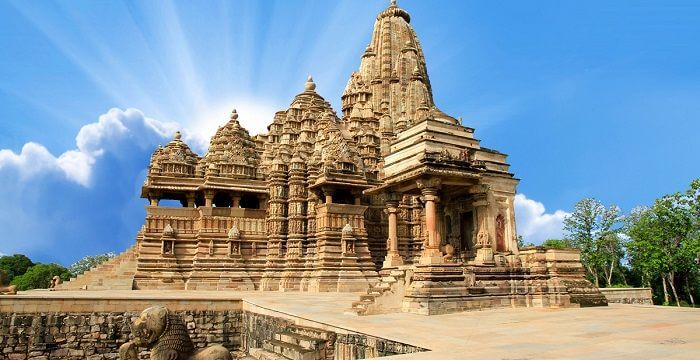
The temple of Vishnu, which is popular as Lakshmana temple, is built by Yasovardan (A.D. 954). Besides this, the temples of Parsvanatha, Visvanatha and Vaidyanatha were built during the regime of king Dhanga, and the Chitragupta and Jagadambi temples that belong to the western group of royal temples are also famous among the visitors. In 1986, it was declared a World Heritage Site by UNESCO. 13) Group of Monuments at Hampi, Madhya PradeshIt is located on the banks of Tungabhadra River in the north region of the Karnataka. This site comprises the ruins of Vijayanagara that are known as the "Group of Monuments at Hampi." The monuments include temples, forts, sacred complexes, mandapas, shrines, pillared halls, etc. 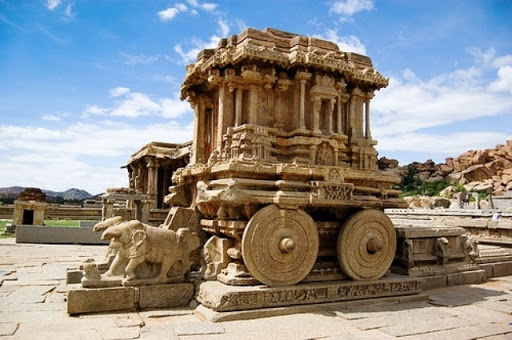
Hampi was the capital of the Vijayanagara Empire during the 14th century. Later, it was left in ruins after Muslim rulers invaded the empire. This site was declared a UNESCO World Heritage Site in 1986. This group of Monuments is an example of the fine Dravidian style of art and architecture. The main highlight of this place is Virupaksha temple that is still a renowned religious place for the Hindus. Some other highlights of the site include Achyutaraya temple complex, Krishna temple complex, Narasimha, Ganesa, Hamakuta group of temples, Lotus Mahal complex, Pattabhirama temple complex, and Vitthala temple complex. 14) Group of Monuments at Pattadakal, KarnatakaPattadakal is located in the Bagalkot district on the banks of Malaprabha River in the Karnataka state of India. It was the capital of the Chalukya dynasty of medieval India. It is also known as the "City of the Crown Rubies." These monuments at Pattadakal mostly include Hindu and Jain temples of 7th and 8th century. 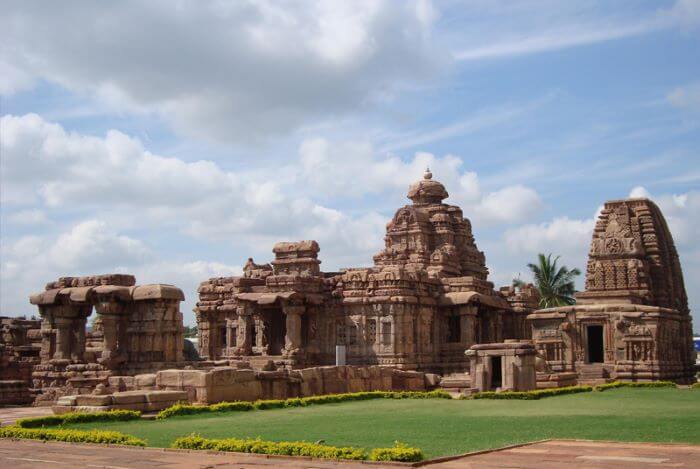
The Hindu temples are devoted to Lord Shiva. They display a combination of Dravidian and Indo-Aryan style of architecture. In 1987, it was accorded the status of a UNESCO World Heritage Site. The famous temples at this site include Sangamesvara temple, which is believed to be the oldest temple in Pattaldakal, and Mallikarjuna temple that was built after Vikramaditya II defeated the Pallavas. The other temples are Kasivisvesvara, Galagantha, Papanatha, Virupaksha, Jambhulingeshwara, Kashi Vishwanatha, Chandrashekhara temple and Jain Narayana temple. 15) Elephants Caves, MaharashtraElephanta caves are a collection of rock-cut cave temples located on the Elephanta (Gharapuri) Island at a distance of 11 km from the Mumbai, Maharashtra. These caves were built by a Hindu ruler of the Kalachuri dynasty in the 5th and 6th centuries. After the restoration of this site in the 1970s, it was designated as a World Heritage Site by UNESCO in 1987. 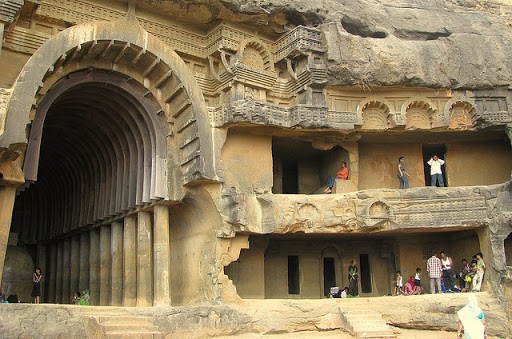
This site can be divided into two groups of caves; one group of five Hindu caves and the other group of two Buddhist caves. The sculptures of Hindu caves are dedicated to Lord Shiva. The Cave 1 of this site was the main cave for the population of this island to worship Hindu god and goddesses. The main highlight of this place is 6 meters high Trimurthi sculpture of Lord Shiva with three faces. It is the most valuable asset of this site as well as a masterpiece of the Gupta and Chalukya Empire. It is said that during the Portuguese reign the caves were damaged. As of now, the Archaeological Survey of India is responsible for the protection and maintenance of this site. 16) Humayun's Tomb, New DelhiIt is located at Nizamuddin East in the capital city of New Delhi, India. It is a mausoleum (tomb) or burial site of the Humayun, the second Mughal Emperor. Humayun's tomb is one of the finest illustrations of Mughal architecture. It was built by the first wife of Humayun, Begam Bega and is the first garden-tomb in India. It is a Char Bagh garden with four entrances that divide the garden into four smaller segments. In 1993, it was declared a world heritage site by UNESCO. It took around seven years (1565 to 1572) to complete the construction of this tomb, which reflects a blend of Turkish, Persian and Indian Islamic architecture. 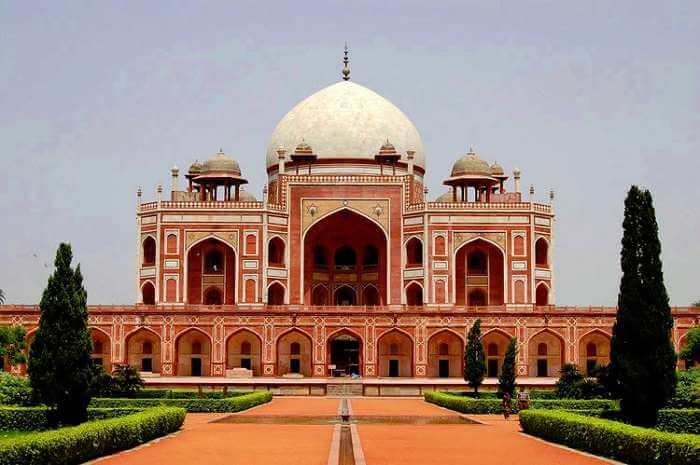
The tomb is located at the centre of the garden on a 7m high stone platform. It is perfectly symmetrical and made of red sandstone and decorated with white and black marble at the borders. Its height is 47 meters and breadth is 91 meters. The main architecture involved in the construction of Humayun's tomb was Mirak Mirza Ghiyath from Persia. The complex also houses tombs of family members and relatives of Humayun and Mughal rulers such as Afsarwala tomb, Barber's tomb, Isa Khan Niyazi's tomb, and Humayun's wife Hamida Banu begum is also buried here. During the first war of Independence in 1857 in India, the last Mughal emperor, Bahadur Shah Zafar II took refuge at this place. 17) Great Living Chola Temples, Tamil NaduThe Great Living Chola Temples are situated in the state of Tamil Nadu and were built by the Chola dynasty rulers; one of the longest-ruling dynasties in South India. This site houses the 3 great Chola temples built in the 11th and 12th century; the Brihadisvara temple at Thanjavur, the Airavatesvara temple at Darasuram and the Temple of Gangaikonda Cholisvaram. These temples are collectively known as Great Living Chola Temples and designated as a World Heritage Site in 1987 by UNESCO. 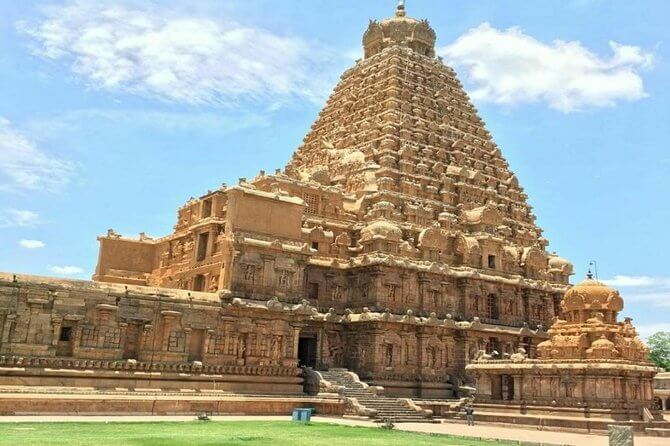
Brihadisvara Temple: It was built by Raja Raja Chola I of the Chola dynasty. It houses a 3.7 m tall Shiva Linga and various sculptures of Hindu gods and goddesses including a large sculpture of Nandi carved from a single stone. It also has a granite made gopuram (large pyramid-shaped tower over the entrance gate). The temple of Gangaikonda Cholapuram: It was built by Rajendra Chola I (son of Raja Raja Chola I) to honour his victory over northern empires. It contains a four meters high Shiva Linga and colossal representation of Navagrahas placed in a circle. The other attractions of this temple include statues of Chandeswarar and Gnanasaraswathi. The Airavatesvara Temple at Darasuram: It is the smallest temple as compared to the other two Chola temples. It was devoted to Lord Shiva and was built by Rajaraja II in the 12th century. It has a 24 meters high vimana (Structure over the garbhagriha or inner sanctum). The mandapa (temple's porch or pavilion for public rituals) at the front is built in the form of a chariot led by horses. 18) Buddhist Monuments at Sanchi, Madhya PradeshThis site is located at Sanchi on a small hilltop at a distance of 10 km from the city of Vidisha in Madhya Pradesh. It houses a variety of Buddhist monuments that are the oldest stone structures in India. These monuments comprise monasteries, monolithic, stupas, temples, Ashoka pillar, and other Buddhist sculptures. In 1989, this site was given the status of a UNESCO World Heritage Site. 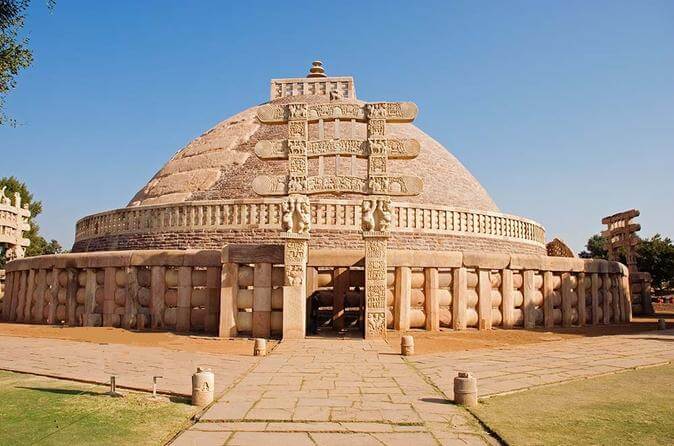
The main attraction of this site is the Great Stupa that houses relics of Buddha and is mounted on the top of a peaceful hill. The dome of the stupa is 16 meters in height and 36 meters in diameter. There are also smaller stupas, remains of temples and monasteries around the great stupa. Besides this, there are four gateways around the Stupa with intricate carvings related to the life of Buddha. These gateways face the four directions of the compass. The other highlights of Sanchi include Ashoka Pillar and Sanchi Museum. The site was left in ruins after 13th century thereafter it was rediscovered in 1818 by General Taylor, a British officer. In 1912, Sir John Marshal, an officer of the Archaeology department initiated the restoration work at this place. 19) Qutub Minar, DelhiQutub Minar is located in the South West region of Delhi, India. It became a UNESCO World Heritage Site in 1993. The construction of Qutab Minar was completed in different phases; it began in 1192 and completed in 1220. 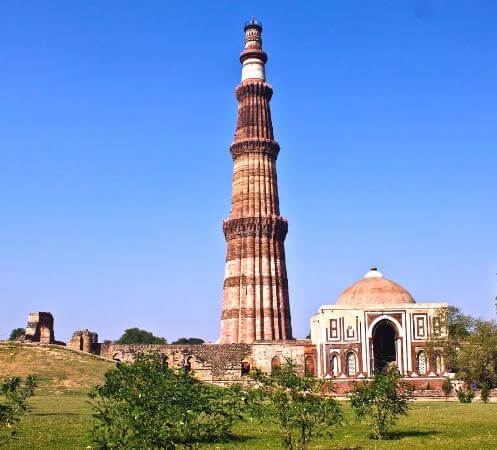
Its construction was started by Qutub ud-Din Aibak (founder of slave dynasty in India), later lltumish added three storeys and the restoration work was done by Firoz Shah Tughlaq. It was built with marble and red sandstone. Its height is 73 meters and the diameter of its base is 14.32 meters, whereas at the top it is 2.75 meters. The diameter decreases with the height that makes it look like a cone. A spiral staircase is also built inside the tower that has 379 steps leading from the base to the top of the tower. The other important structures or monuments in the Qutub Complex are as follows:
20) Rock Shelters of Bhimbetka, Madhya PradeshIt is located close to the Vindhya Mountains in the Deccan Plateau in Madhya Pradesh. It comprises seven hills and 750 rock shelters and was given the position of a UNESCO World Heritage Site in 2003. Bhimbetka is also known as Bhima's Lounge, who was the one of the Pandavas from Mahabharata. It is an archaeological site that dates back to Paleolithic, Mesolithic, and historic period. 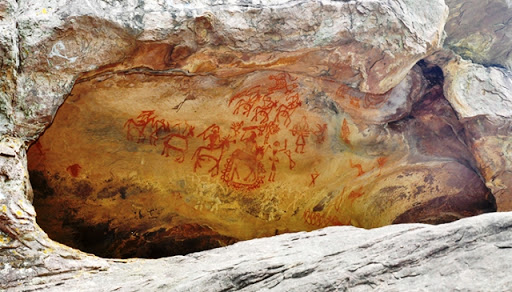
The rock shelters have numerous rock paintings of the past from the Mesolithic Period to the Historical period. The paintings are created with natural colours mostly red and white with some dashes of green and yellow. The paintings show the everyday life of people in those times such as hunting, dancing, horse riding, collecting honey, etc. The paintings of animals like lions, tigers, dogs can also be seen on the rocks. Besides these paintings, the walls of shelters are also decorated with inscriptions of religious symbols that were popular in those times. These rock paintings were discovered by VS Wakanakar in 1957 during excavation work. These paintings display the lives of a lost community that lived here thousands of years ago. Auditorium cave surrounded by quartzite towers is the main highlight as well as the largest rock shelter at Bhimbetka. 21) Chhatrapati Shivaji Terminus (CST), MumbaiChhatrapati Shivaji Terminus is located in the heart of Mumbai and was declared a UNESCO World Heritage Site in 2004. It was built by a British architect F.W. Stevens in an Italian style of architecture in 1878. It is an excellent example of the Victorian-Gothic style of architecture in India. Some of its parts also reflect Mughal styled architecture. It took around 10 years to build this terminus. 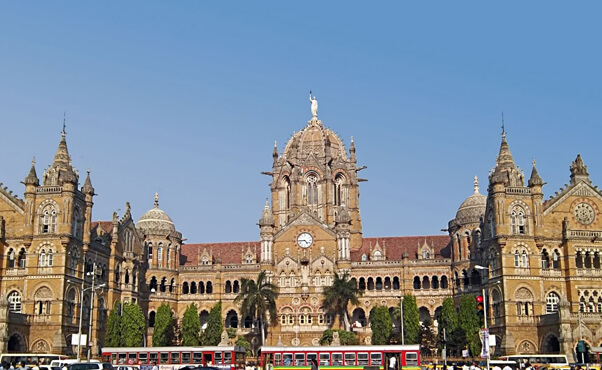
It also serves as the headquarters of the Central Railways in India. Previously, it was named after Queen Victoria, Victoria terminus. Later, in 1996, it was renamed Chhatrapati Shivaji Terminus (CST) by the then Railway Minister, Suresh Kalmadi in the memory of Shivaji Bhonsle I. There are a total of 18 platforms at this terminus out of which seven serve suburban trains and rest of the platforms serve long-distance trains. It is connected to all major cities of the country through railway. 22) Champaner-Pavagadh Archaeological Park, GujaratIt is located in the Panchmahal district at a distance of around 140 km from Ahmedabad. It was built in the 16th century by Sultan Mahmud Begada of Gujarat and in 2004 it was recognized as a World Heritage Site by UNESCO. 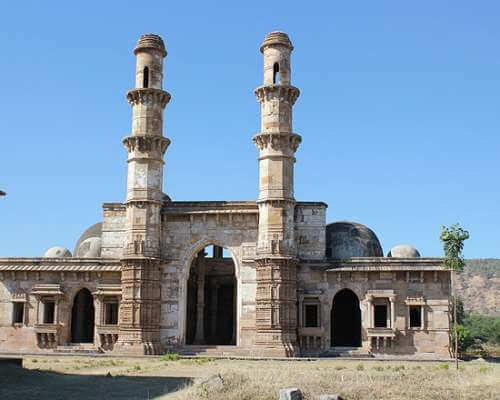
The monuments of this site date back to the 8th to 14th century. Once it was the capital of the empire of Mehmud Begada. At the beginning of the 16th century, this place was looted by Humayun. In 1803, this site was restored when Britishers discovered it. This site houses fortified walls, mosques, tombs, an ancient citadel, a palace, buildings, and military structures, stepped wells, terraces, Hindu and Jain temples, and remains of the 16th century capital of Gujarat. It houses the Islamic designs before the era of Mughals. A total of 114 monuments have been identified at this park by Baroda Heritage Trust. The Kalikamata temple located on the Pavagadh Hill is a sacred shrine for the devotees that come here in large numbers every year. Besides this, there are many popular monuments at Champaner such as Sakar Khan's Dargah, Jami Masjid, Kevda Masjid, Mandvi (Custom House), Bawaman Mosque, and more. 23) Hills Forts of RajasthanHills Forts of Rajasthan refers to a collection of six historical forts located in the Aravali Range in Rajasthan. These forts include Kumbhalgarh Fort, Ranthambore Fort, Gangron Fort, Amer Fort, Chittorgarh Fort, and Jaisalmer Fort. This site dates back to the 5th century AD and was given the status of World Heritage Site by UNESCO in 2013. 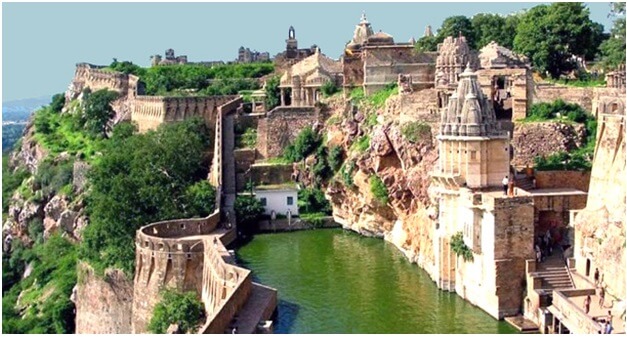
Some of these forts are very large up to 20 km in circumference. These forts are the illustrations of the power of the Rajput rulers from the 8th to the 18th centuries and their Military Defence Architecture in those times. The water harvesting structures are also built in the forts. The artworks on the outside and interiors of these forts show the lifestyle and grandeur, craftsmanship and glory of the Rajputana rulers. 24) Rani Ki Vav, PatnaIt is a type of ancient water storage system situated on the banks of River Saraswati in the small town of Patan in Gujarat. It became a UNESCO World Heritage Site in 2014. Its construction was started by Rani (Queen) Udayamati in 1063 in the memory of her husband Bhimdev, the son of the founder of the Solanki dynasty, Mularaja. 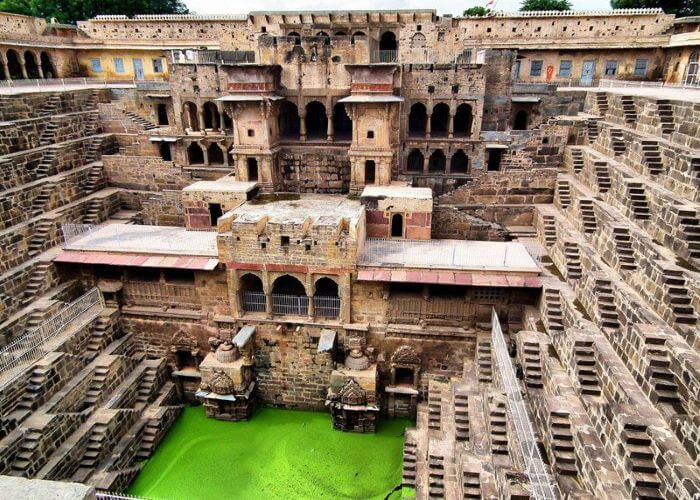
It is a stepwell built below the ground in the form of an inverted temple that descends suddenly and has many levels of stairs. Its length is 65 meters, width is 20 meters and depth is 28 meters. The well is decorated with over 1500 major and minor sculptures of religious and mythological characters. The central theme is the Dasavataras which means ten incarnations of Lord Vishnu. It is an example of Maru-Gurjara architectural style that involves complex techniques and expertise. The site remained buried for sanctuaries under slit, so it was found preserved when excavated in the 1960s. 25) Nalanda Mahavihara (Nalanda University), BiharThis site is located at Nalanda district in the Bihar state of India and houses archaeological remains of an ancient educational institution from the 3rd century to the 13th century. Here, one can see shrines, stupas, viharas and artworks on the stones and metals. In 2016, it became a UNESCO World Heritage Site. 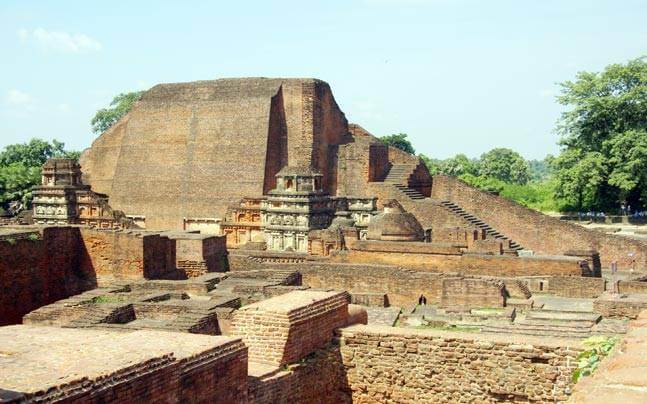
Nalanda Mahavihara is believed to be the oldest universities in the world as its origin dates back to the 3rd century. It is believed that this site was visited by Gautam Buddha many times. Besides this, a Chinese traveller, Hiuen Tsang also stayed here for around 12 years and left detailed information about the education system and life of this Mahavihara. Hiuen Tsang Memorial Hall has been built here in his memory. It was constructed by king Kumargupta I of Gupta Dynasty. However, it underwent expansion even after the Gupta period. It was recovered in 1915 by Archaeological Survey of India. In the 3rd century, the Great King Ashoka built several temples at Nalanda and in the 2nd-century famous alchemist, Nagarjuna came here for teaching and learning. 26) Mountain Railways of IndiaThis site includes the three operational railway tracks in the mountainous terrain in three different states of India. As of now these tracks collectively treated as a World Heritage Site. The three Mountain Railways of India are as follows: i) The Darjeeling Himalayan Railway: It is located in West Bengal and is also called a toy train due to its small size. 
It was the first hill passenger Railway in India that became operation in 1881 and became a World Heritage Site in 1999. Its track that connects New Jalpaiguri to Darjeeling is 88 km long. Over the years, two more lines were added to it and it became famous as the Mountain Railway of India. ii) The Nilgiri Mountain Railway: It is one of the main attractions in the hill station of Ooty and is also known as a toy train due to its small size. 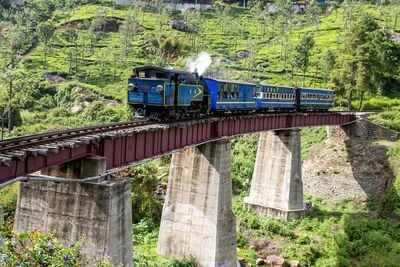
It is a steam-based railway that was started in 1908 and was accorded the status of a UNESCO World Heritage Site in 2005. This train covers a distance of 46 km amidst picturesque locations in five hours. The train starts travelling from Mettupalayam towards its final stop Udhagamandalam. iii) Kalka Shimla Railway: It is also a toy train that runs over 2 feet 6 inches narrow gauge in the Kalka and Shimla regions of Himachal Pradesh. 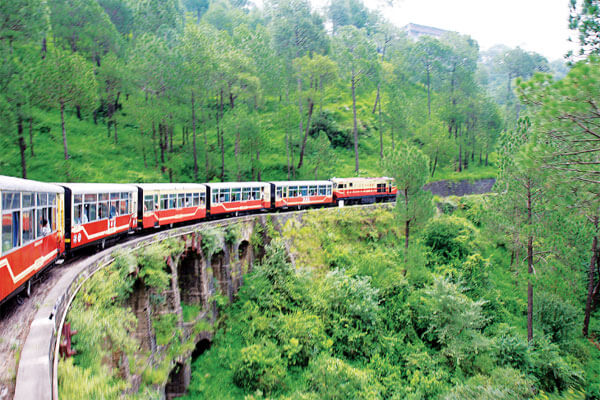
The train takes you through the picturesque locations starting from Kalka to its final destination Shimla. It was constructed in 1899 and the track was built by creating 107 tunnels and 864 bridges in order to connect Shimla to all nearby cities and places of tourist interest. 27) The Historic City of AhmedabadIt is located on the banks of Sabarmati River. A study was initiated in 1984 by the Ford Foundation for the conservation of heritage structures of the city and in 2017 Ahmedabad was declared a World Heritage Site by UNESCO. 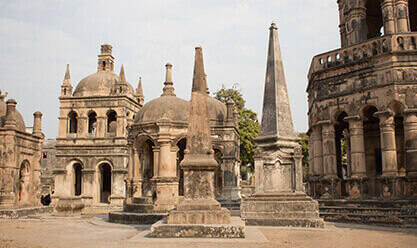
It is a walled city with a rich historical heritage that includes cultural values, traditional houses with unique features such as bird feeders, public wells, religious structures, etc., and gated traditional streets. It was founded at the beginning of 15th century by Ahmad Shah I of Gujarat Sultanate. Ulvi Shiraz, a famous poet during the 15th century, has defined Ahmedabad as a pretty mole on the face of Earth. The European traveller Gemelli Careri when visited this city compared it to Venice. In the 19th century, Henry George Briggs and Edwin Arnold described the city as a perfect place for painters and poets. 28) Victorian and Art Deco Ensemble of MumbaiThis site is located in the Fort Area of Mumbai around the Oval Ground. It is a collection of 94 buildings that hold cultural values and significance. These buildings include Victorian Neo-Gothic buildings of the 19th century and Art Deco buildings of 20th century. It was given the status of a World Heritage Site by UNESCO in 2018. 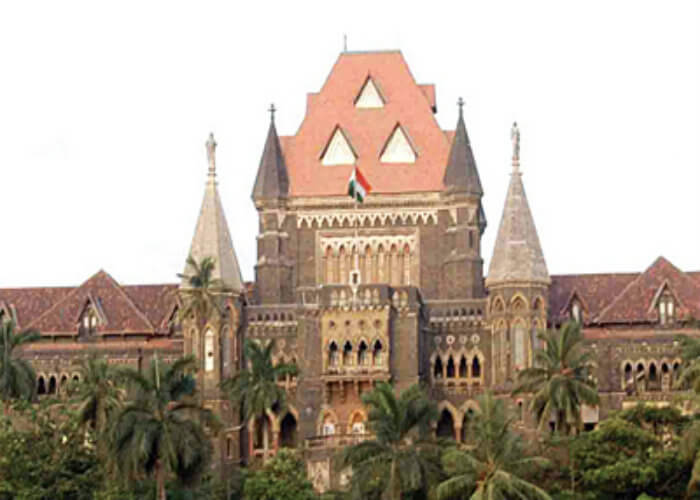
The Victorian Buildings included some features of Indian architecture like verandas and balconies as per the climate of the city. These buildings include Bombay High Court, the Old Secretariat Building, the Fort Campus of the University of Mumbai, the Rajabai Clock Tower and more. Art Deco buildings of the 20th century are on the west of the Oval ground along the Arabian Sea. They include the Cricket Club of India, Ram Mahal, the first row of the Backbay Reclamation Scheme. This site represents the modernization that Mumbai has undergone in the 19th and 20 centuries. 29) The Pink City, JaipurJaipur is also known as the pink city, which is located in the state of Rajasthan, India. It is known for its forts, monuments, palaces, culture, art and craft. Its magnificent architecture and culture is a testimony to the glorious past of our country. It became a UNESCO World Heritage Site in 2019. The whole city was painted pink in 1876 when the Prince of Wales visited this city. Thereafter, it became famous as "Pink City." 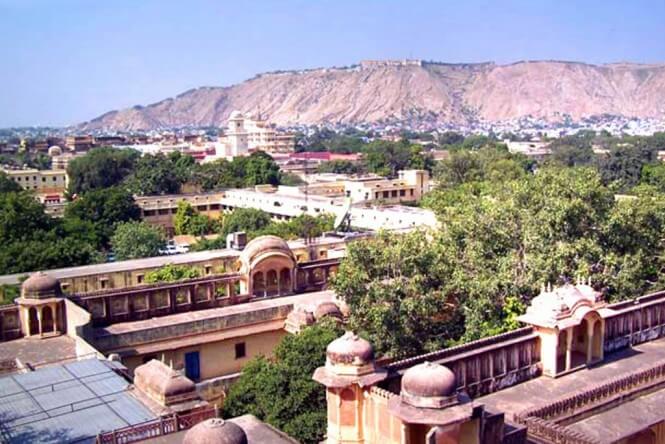
The city was built by Maharaja Jai Singh II in 1727. It is surrounded by walls and has many gates to enter the city such as Ajmeri Gate, New Gate, Ghat Gate, Samrat Gate, Zorawar Singh Gate, etc. Besides this, there are many famous structures in the city such as Jantar Mantar, City Palace, Hawa Mahal (Palace of winds), etc. Johri Bazar and Bapu Bazaar are famous markets of the city where visitors can buy Rajasthani jewellery, shoes, fabric, handicrafts, etc. 30) The Architectural Work of Le Corbusier, ChandigarhThere are a total of 17 Architectural Works of Le Corbusier located in seven different countries that include Japan, Belgium, Germany, France, Switzerland and India. 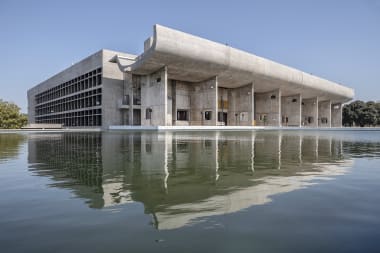
The capitol complex of Chandigarh is one of the Architectural Works of Le Corbusier. It is located in sector 1 of the Chandigarh, Punjab. It was built in 1950 and was recognized as a UNESCO World Heritage Site in 2016. It hosts the legislative assembly of Haryana and Punjab. This site like other sites of Le Corbusier contributed to the modern movement that aimed to find our new architectural techniques to fulfil the needs of society. List of Natural World Heritage Sites in India:1) Keoladeo National Park, Bharatpur, RajasthanIt is located at Bharatpur in Rajasthan, India and is also known as Bharatpur Bird Sanctuary. This site is home to more than 300 bird species and migratory birds that come here from other countries during specific seasons of the year. Apart from birds, it also houses around 400 floral spices, and other animals like sambar, chital, nilgai, boar, turtles, snakes, amphibians, lizards, etc. 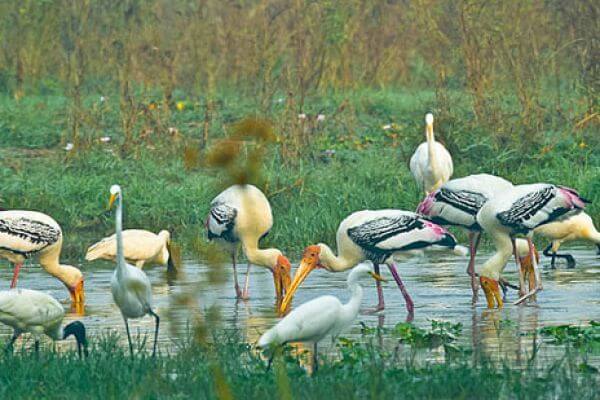
Keoladeo National Park was established in 1982. Later after few years, in 1985, UNESCO recognized it as a World Heritage Site. It is also a perfect place for ornithologists for ornithological studies. Formerly, it was a duck shooting ground later it was developed into a wetland spread over an area of 29 sq. km. As of now, hunting is prohibited in this area and is a punishable crime. Mr Peter Scott, the founder of the World Wildlife Fund described this site as one of the Best Bird Areas in the world. The best time to visit this place is from August to November if you want to see the native birds and October to February to see the migratory birds. 2) Nanda Devi and Valley of Flowers National Parks, UttarakhandThis site consists of two different parks namely Nanda Devi National Park and Valley of Flowers National Park, both are located in Uttarakhand, India. 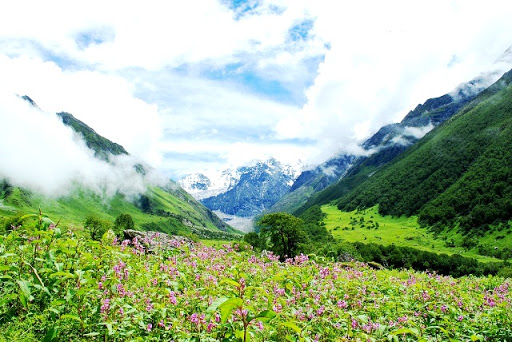
There is a great diversity in the flora and fauna of this region. It is home to 114 bird species, 312 floral species and various wild animals such as musk deer, Himalayan black bear, mainland serow, snow leopard, etc. In 1988, Nanda Devi became a UNESCO World Heritage Site. Later in 2005, the Valley of Flowers National Park that covers an area of 16 sq. km is added to Nanda Devi and it was renamed Nanda Devi and Valley of Flowers National Parks. The flower valley is located in North Chamoli, Uttarakhand and is carpeted by endemic alpine flowers and rich diversity of flora. Some endangered animals can also be seen at this place such as Asiatic black bear, brown bear, snow leopard, musk deer, blue sheep and red fox. 3) Western GhatsIt is a mountain range stretched over an area of 1.4 lakh sq. km beside the western coast of the Indian Peninsula from Tapti River in the north to the southern tip of India. It includes various national parks, forest reserves, wildlife sanctuaries, national parks, etc., in the states of Karnataka, Kerala, Tamil Nadu and Maharashtra. 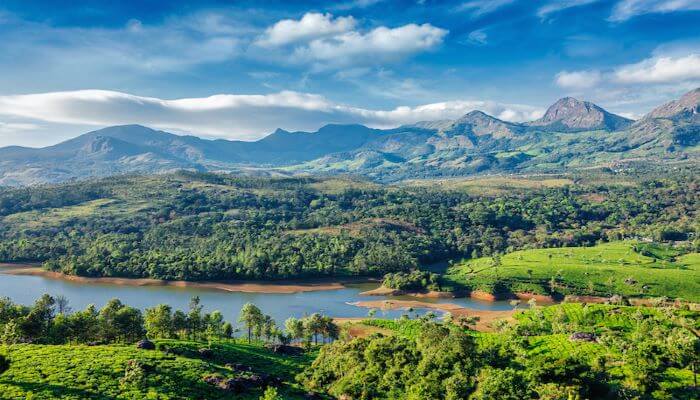
It is also known as the Great Escarpment of India and was recognized as a world heritage site in 2012 by UNESCO. The Western Ghats are rich in diversity of flora and fauna and famous for the occurrence of unique ecological and biophysical processes. It is home to over 30 percent of all plants, birds, and mammal species in India. So, it is also designated as the world's eighth "hottest hotspot" of biological diversity. 4) The Great Himalayan National Park (GHNP), Himachal PradeshIt is located at the Banjaar Sub-Divison in the district of Kullu, Himachal Pradesh. It was inscribed as a World Heritage Site by UNESCO in 2014. This site mainly consists of alpine riverine forests and alpine meadows and peaks. 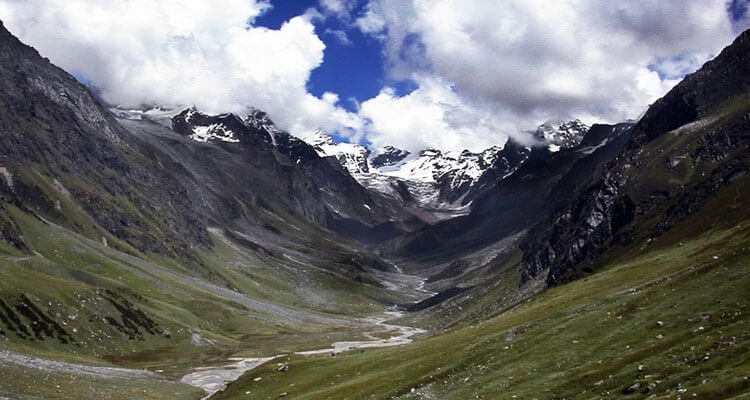
The Great Himalayan National Park was planned in 1984 and notified as a national park in 1999. This park was created under the Wildlife Protection Act, 1972 to protect, and promote wildlife. It is home to a rich variety of plants and animals. For example, 31 mammal species, 180 bird species, 11 annelids species, 9 species of amphibians, and 127 species of insects, and more. Besides this, there are many villages in the park, each of which has its own culture and a deity. The rivers of this region are fed by the glacial and snow meltwater. 5) Sundarbans National Park, West BengalIt is situated on the Sunderban Deltas in West Bengal, India, spread over an area of around 4100 sq.km. It is a tiger reserve as well as a Biosphere Reserve covered with dense Mangrove forests that make it the world's largest mangrove forests. 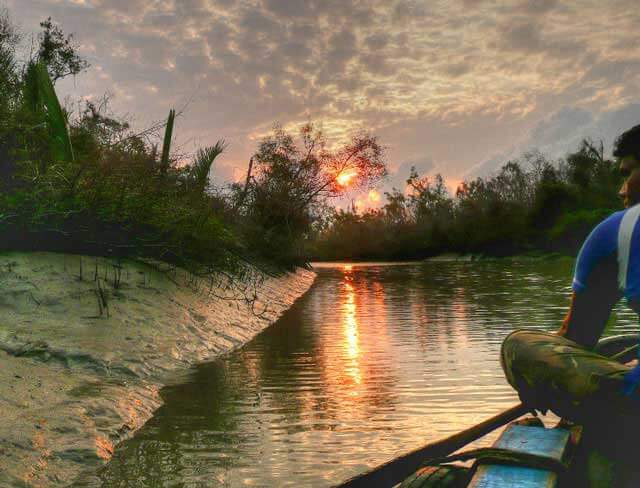
This site is home to over 400 Royal Bengal Tigers and a variety of species of birds, mammals, reptiles, amphibians, etc. The saltwater crocodile is another highlight of this place. The name of the park is derived from Sundari Tree that is an attractive mangrove tree. In 1973, it became a tiger reserve; in 1984, it became a National Park and in 1987, it was given the status of UNESCO World Heritage Site. The park comprises small islands, tidal waterways, mudflats, and rivers that enhance its natural beauty. 6) Kaziranga National Park, AssamIt is situated in Nagaon and Golaghat districts of Assam. Apart from being a national park, this site is also a tiger reserve, an Important Bird Area (IBA) and a UNESCO World Heritage Site since 1985. 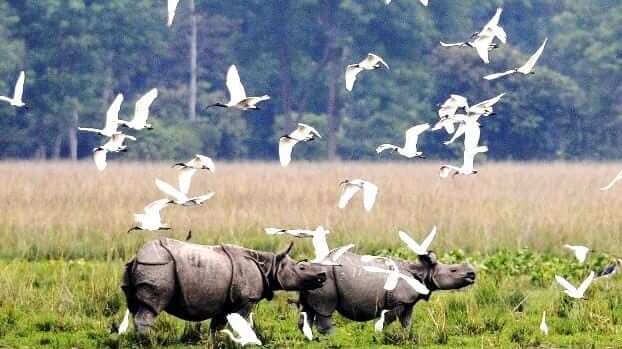
It is home to two-thirds of the total population of greater one-horned rhinoceros. Apart from tigers and rhinoceros, you can see a variety of wildlife such as elephant, wild Asiatic water buffalo, jungle cat, fishing car, Indian mongoose, golden jackal, sloth bear, Bengal fox, etc. It is also rich in flora that comprises grasslands on alluvial plains, tropical wet and semi-evergreen forests. Its aquatic plantation includes water lilies, lotus, and water hyacinth. Besides this, the park offers elephant safari and jeep safari to see wildlife living in their natural habitat. 7) Manas Wildlife Sanctuary, AssamIt is located in the foothills of Eastern Himalayas spread over an area of around 950 sq km. In 1985, it was inscribed as World Heritage Site by UNESCO and in 1989 it was accorded the status of a Biosphere Reserve. 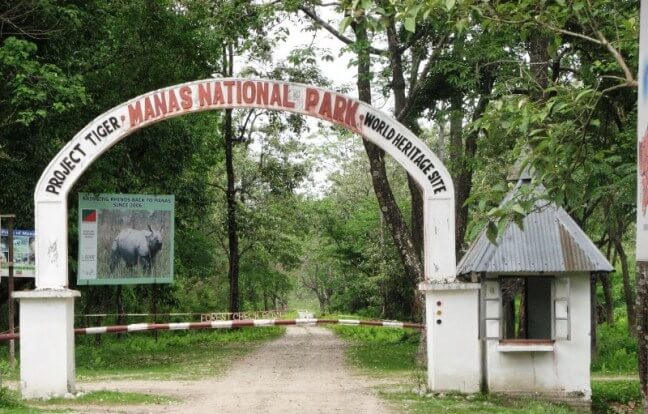
Its name is derived from the Manas River, which is a giant tributary of Brahmaputra River. The Manas River along with other rivers flows through this sanctuary. Besides this, it shares borders with Bhutan's Royal Manas National Park. The common wildlife animals in this sanctuary include Assam roofed turtle, golden langur, hispid hare, pygmy hog, barasingha, Asian elephants, sloth bear, tigers, leopard, and more. Its flora is a mix of Himalayan subtropical broadleaf forests and Sub-Himalayan Bhabar Terai. The main attractions of Manas wildlife sanctuary include elephant safari, jeep safari, river rafting, tea plantation visit, etc. Mixed World Heritage Site in India1) Khangchendzonga National Park, SikkimIt lies in the mountain range of Himalaya in the state of Sikkim in India. This site is also known as a Kanchenjunga National Park and Kanchenjunga Biosphere Reserve. In the year 2016, it became a UNESCO World Heritage Site. 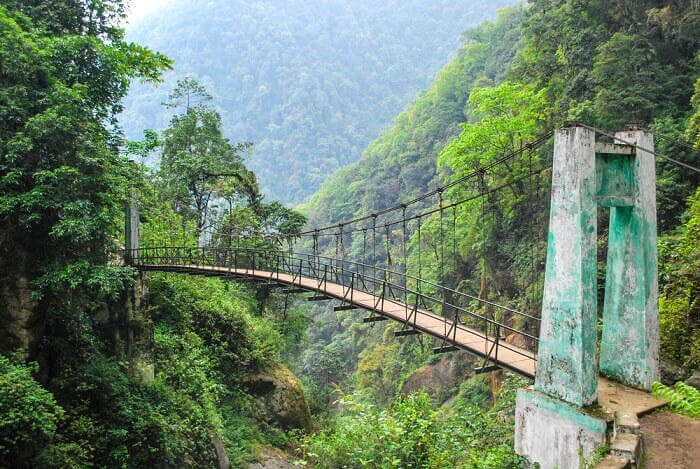
It is the first mixed heritage site in India. The world's third-highest peak Kanchenjunga is also located at this park. Its western boundary stretches across the international border between India and Nepal. Khangchendzonga National Park is spread over 1784 sq. km and has a very diverse topography that comprises valleys, 18 glaciers, hills, lakes, snow-capped mountains and plains and also has a rich variety of plants and animals. Zemu Glacier is also located here. Besides the flora and fauna, it is also a religious place for Buddhists as it houses a Tholung Monastery and a Gompa, both are very holy places in Buddhism. The word Khangchendzonga also means "the abode of Gods."
Next TopicTourist Places in India
|
 For Videos Join Our Youtube Channel: Join Now
For Videos Join Our Youtube Channel: Join Now
Feedback
- Send your Feedback to [email protected]
Help Others, Please Share









